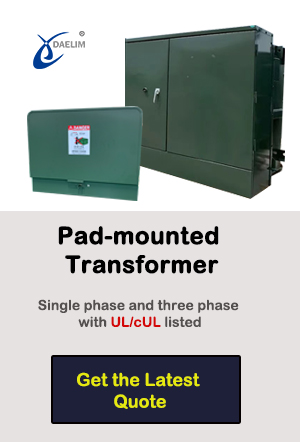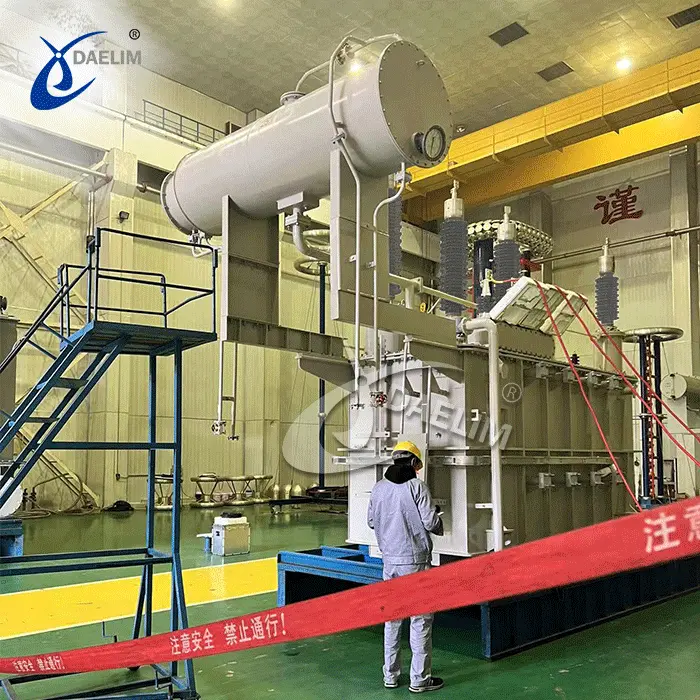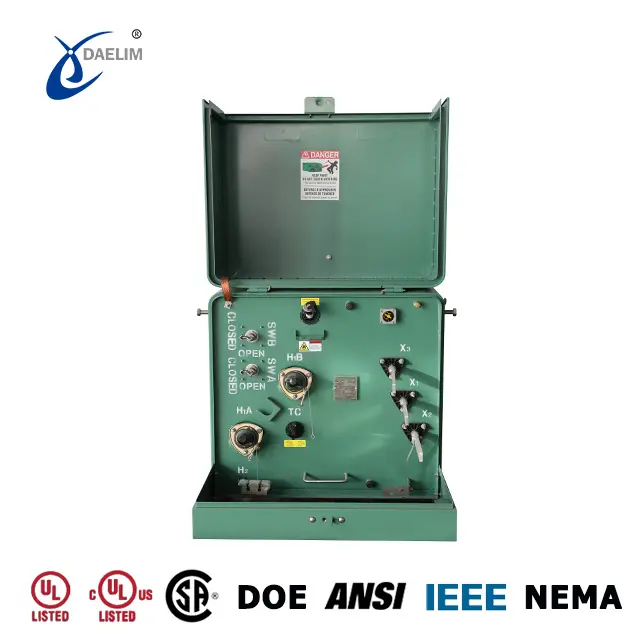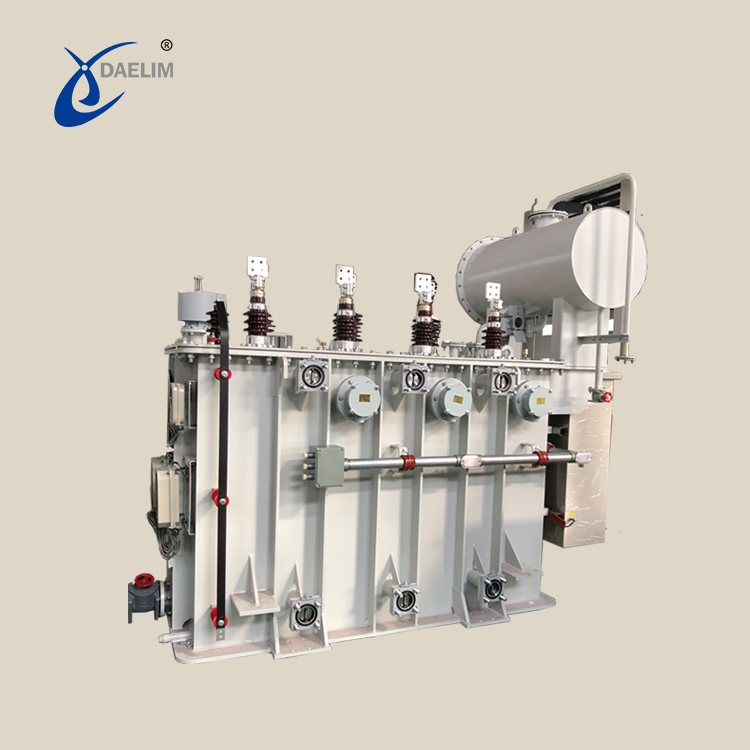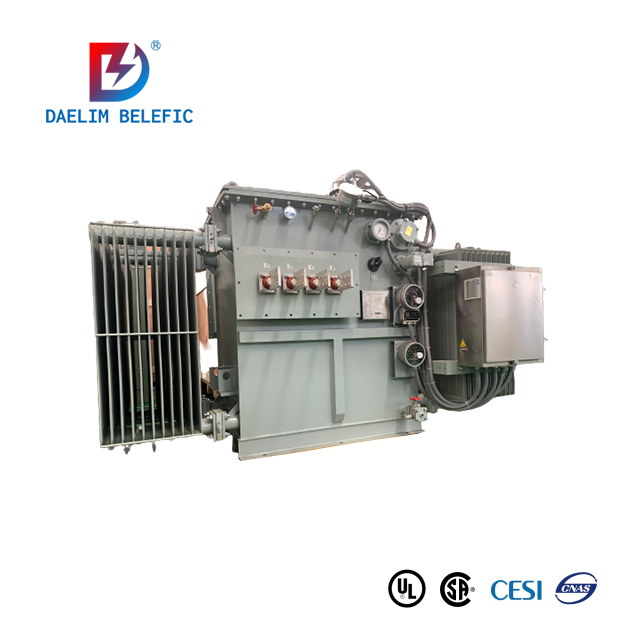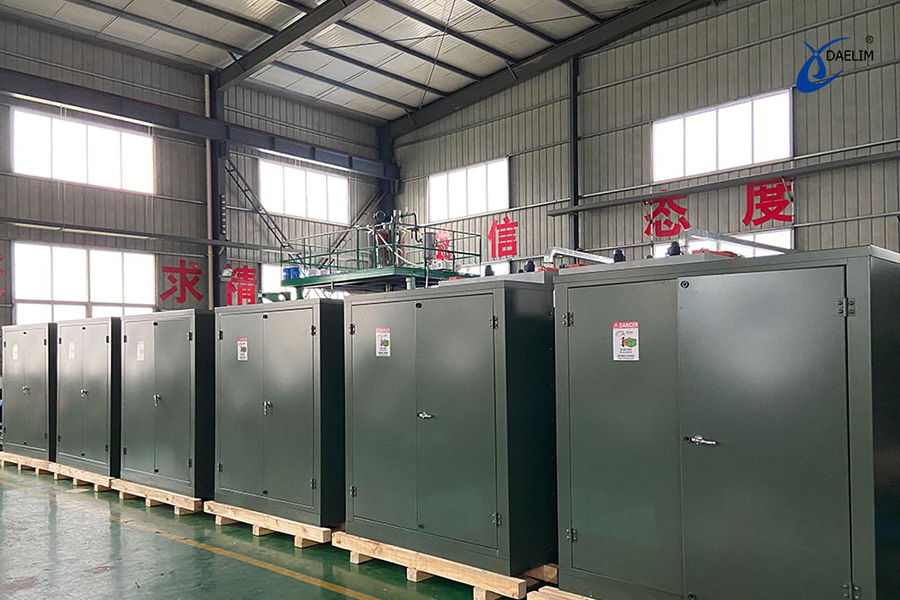Basic guide to boost transformers
This article focuses on the booster transformer, including the meaning of the booster transformer, type, connection mode, voltage regulation mode, internal protection equipment, etc. This knowledge is more basic about the boost transformer, hope to understand the boost transformer has certain help!
All boost transformers manufactured by Daelim will undergo strict factory tests before leaving the factory to ensure that the transformers meet the manufacturing and sales standards. Daelim has many partners in North America, which can solve the transformer after-sales service problem perfectly so that customers can buy transformers with confidence. If you have any transformer needs, please feel free to contact me!
What is a booster transformer?
Booster Transformer refers to the conversion of the low voltage of the input transformer into a high voltage to meet the needs of transmitting power over long distances. A booster transformer is one of the necessary types of transformer in an electric power system. It is used together with a voltage regulator for the long-range transmission of electric power.
Read more: What is the difference between the mineral oil and vegetable oil?

Types of booster transformer
Booster Transformers come in many types, For example, pole-mounted transformers, pad-mounted transformers, power transformers, distribution transformers, etc. Customers can choose various types of booster Transformers with different capacities and voltages according to their actual needs. Beijing Daelim Transformer is a manufacturer with many years of experience in transformer production and export in China. Daelim's Booster Transformer is sold in many American countries, such as the United States, Canada, Mexico, Argentina, Chile, etc.
Learn more: Surplus 15000 kva transformer for sale!
Booster transformer connection
The Booster Transformer Connection types include Dyn1 and YNyn0, both of which are commonly used by transformers in North America. There is no actual cost difference between Dyn1 and YNyn0, only the difference in real connection. Therefore, customers can choose the connection mode according to the local habit of transformer installation, and also avoid the inconvenience caused by the connection mode during installation. Another difference is that Dyn1 has three cores, while YNyn0 has five cores.
Enjoy free: The Ultimate Guide to 1500kVA Transformer

What are the types of boost transformers?
With the development of power systems, the demand for boost transformers is higher and higher. According to the number of phases, there are single phases and three phases; According to the winding and the position of the core is divided into the inner core type and outer core type; According to the cooling mode, there are dry self-cooling, air cooling, forced oil circulation air cooling, and water cooling; According to the neutral insulation level, there are full insulation and half insulation; According to the winding material, there are A, E, B, F, H, and other five insulation. Different kinds of transformers have different requirements for operation; According to the pressure regulation mode, it can be divided into on-load pressure regulation and no-load pressure regulation.
Get it now: 3 Phase Pad Mounted Transformer-Daelim Belefic
Why should the boost transformers do an impact test before the formal operation?
(1) Check whether the insulation strength of the boost transformer can withstand the impact of full voltage or operating overvoltage.
When pulling a no-load step-up transformer, cutting off a small excitation current, could occur before the exciting current reaches zero forced out, as a result of the circuit breaker closure phenomenon, make operating over-voltage transformer with characteristics of inductance, its value except related to switching function, the structure of the transformer, transformer neutral point grounding way also influence cutting no-load transformer overvoltage. Generally ungrounded transformer or transformer grounded by arc suppression coil, the overvoltage amplitude can reach 4-4.5 times the phase voltage, and for the neutral point directly grounded transformer, the operating overvoltage amplitude is generally not more than 3 times the phase voltage. This is also required to do the impact test of the transformer neutral point direct grounding reason.
(2)When put into a no-load boost transformer, excitation inrush current will be generated, and its value can reach 6-8 times the rated current. Because the excitation inrush current will produce a lot of power, the impact test is to assess the mechanical strength of the transformer under the action of the large excitation inrush current and whether the relay protection will misoperate.
 Read more: The Ultimate Guide to 2500KVA Transformer
Read more: The Ultimate Guide to 2500KVA Transformer
What kinds of boost transformer voltage regulation?
The voltage regulation mode of boost transformer has two kinds: on-load voltage regulation and no-load voltage regulation:
(1)On-load voltage regulation means that the transformer can adjust its sub position during operation, so as to change the transformer ratio, so as to achieve the purpose of voltage regulation. In an on-load voltage regulating transformer, there are two ways: wire end voltage regulating and neutral point voltage regulating, that is, the difference between the transformer splitter at the end side of the high voltage winding line or at the neutral side of the high voltage winding. At the neutral point side, the connector can reduce the insulation level of the transformer tap, which has obvious advantages. Still, the neutral point must be directly grounded when the transformer is running.
(2)No-load voltage regulation refers to the transformer in the case of a power outage, maintenance to adjust the position of transformer sub, so as to change the transformer ratio, in order to achieve the purpose of voltage regulation.
The boost transformer splitter is generally tapped from the high voltage side, which mainly considers:
(1)Transformer high-voltage winding is generally on the outside, and tap lead connection is convenient;
(2) The high voltage side current is smaller, the conductor section of the current carrying part of the lead line and the split switch is smaller, and the influence of poor contact can be easily solved.
In principle, tap which side can be, to carry out the economic and technological comparison, such as 500kV large step-down transformer tap from the 220kV side, and 500kV side is fixed.
Learn more: High Voltage Transformer Guide In 2022
What is the overexcitation of a boost transformer?
When the boost transformer in the voltage rise or frequency drop will cause the working flux density increase, the transformer core saturation is called transformer over-excitation. After power system because of the accident solution column, part of the system of load shedding overvoltage, ferroresonance overvoltage, step-up transformer tap connection improper adjustment, the long line ends with no-load transformer or other wrong operation, the generator frequency to premature rating increase the exciting current and generator self-excitation situation is likely to be caused high voltage transformer excitation.
When the voltage of the boost transformer exceeds 10% of the rated voltage, the transformer core will be saturated and the iron loss will increase. Magnetic flux leakage makes the box shell and other metal components increase the eddy current loss, resulting in transformer overheating, and insulation aging, affecting the life of the transformer and even burning the transformer.
Enjoy free: Basic Guide Of Electrical Transformer
What are the safety protection facilities of the booster transformer body structure?
The protection facilities in transformer body construction are as follows:
(1) oil pillow:
Generally speaking, the capacity of the oil pillow is about 8-10% of the oil volume of the boost transformer. The role of the oil pillow is to adapt to the volume change of boost transformer oil due to temperature changes, limit the contact between transformer oil and air, and reduce the degree of moisture and oxidation of the oil. Install a moisture absorber on the oil pillow to prevent air from entering the transformer.
(2) Moisture absorber and oil purifier:
The humidifier, which can also be called a breathing apparatus, has a colored silica gel adsorbent inside. When the color of the adsorbent turns blue and red, it indicates that the adsorbent has been wet and should be dried or replaced in time.

Oil purifiers can also be called oil filters. When the transformer oil is fully contacted with the adsorbent through the oil purifier, the oil is purified and the oil magazine is reduced, so as to extend the service life of the transformer oil.
(3) Explosion-proof tube (safe airway) :
Generally speaking, the explosion-proof tube is installed on the box cover of the boost transformer, the main function is to prevent the transformer's internal failure, when the high voltage in the tank, causes great danger.
In addition, the booster transformer can also be equipped with gas protectors, thermometers, oil meters, and other safety protection devices according to the need to protect the normal and safe operation of the transformer.
Read more: Skid mount transformer solution with3 phase pad mounted transformer inside
What is the equivalent aging principle of a boost transformer?
The rated capacity of the boost transformer is the nameplate capacity, which means that if it is operated continuously at a specified ambient temperature for a long time according to this capacity, it can obtain economic and reasonable efficiency and have a normal life (about 20~30 years). The load capacity of the boost transformer refers to the power output in a short period of time. Under certain conditions, it may exceed the rated capacity. It has been proved by experience that when the hottest temperature of the winding of the step-up transformer is maintained at 98℃, the transformer can obtain a normal service life.
The principle of equivalent aging: according to the operation requirements, the winding temperature of the step-up transformer is allowed to be greater than 98℃ in part of the time, while the winding temperature is less than 98℃ in the other part of the time. As long as the transformer in the high temperature of the time of the loss of life (or life) and the transformer in the low temperature of the time of the loss of life mutual compensation, the life of the transformer can be and constant temperature 98℃ runtime equivalence, which is the so-called equivalent aging principle.
Learn more: How Much You Know For The Different Types Of Transformers?
In conclusion
The above mainly introduces some basic knowledge of boost transformers. Beijing Daelim has many years of experience in the manufacture and sale of boost transformers. From a transformer dealer, we have gradually developed into a transformer manufacturing and sales company integrated with industry and trade. Daelim manufactures a wide variety of boost transformers, Including Single phase transformers, Three phase transformers, Oil Immersed transformers, Dry Type transformers, etc. Feel free to contact me!
Related Products
Related Article
Pad Mounted Transformer Project Cases
3750kVA Primary 13.8kV, Secondary:0.415kV Loop-feed Pad-mounted Transformer, 12 sets for US market;
10kv Transformer The Ultimate FAQs Guide - Daelim
The 10kv transformer is usually referred to as a "distribution" transformer. This is because it uses the law of electromagnetic induction to transmit alternating current (AC) steps down the voltage from the primary to the secondary winding. The secondary winding provides the lower voltage that the customer uses.
Overview of Oil-Immersed Distribution Transformers
This article mainly describes the oil-immersed distribution transformer, including the oil transformer application, characteristics, types, and other issues of the transformer.
5+FAQ About 15kV Transformer
How much do you know about 15kv transformers? This article will tell you the answers to 5 common questions. For example, what are the five types of 15kv transformers? What is the specification of a 15kv transformer?
Cast Resin Transformer: Definition, Types, Benefits, Applications, Maintenance
The cast resin transformer is a type of dry transformer that uses epoxy resin to encapsulate the windings and core, providing excellent insulation and environmental protection.

